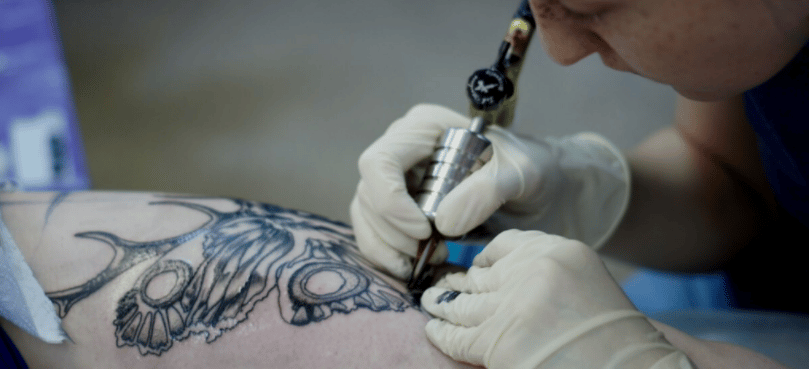Ever tossed a baseball around in your backyard, feeling the satisfying smack of leather against your glove? It’s not only a pastime beloved by many in the US; it has become an important economic force. But have you ever stopped to think about how much economic impact that little white ball has?
This is no mere curveball question.
Imagine for a moment all the bats, gloves, helmets, and cleats bought by millions of baseball enthusiasts worldwide every year. That’s quite a chunk of change being exchanged!
We’re stepping up to bat today to give you some inside scoops on this lucrative industry. From its projected growth hitting $16.24 billion by 2025 to North America’s dominance in revenue share to the rise of smart baseballs and wearable tech changing the game forever – there are surprises at every turn.
Interested? Well, hold tight! We’re just getting started.
The Growing Market of Baseball Equipment
Baseball, an American pastime and a beloved sport worldwide, is seeing significant growth in its equipment market. In fact, by 2025, it’s projected to reach a whopping $16.24 billion globally as expected by experts at The Baseball Home, one of the industry-leading baseball equipment sellers. That’s no small potatoes.
The Driving Force Behind Market Growth
This surge isn’t happening in isolation; there are several contributing factors. One major driver? The popularity of baseball itself – especially within certain regions like the United States and Japan.
You see, these countries don’t just love their home runs and double plays; they put money where their hearts are too. This leads to increased sales of everything, from bats and balls to gloves and uniforms. And as you might guess: more demand equals higher profits for those supplying the goods.
In other words, whether you’re at Fenway Park or Tokyo Dome: your passion for this sport directly contributes towards boosting this industry’s economy.
The Dominance of North America in the Baseball Equipment Market
Speaking about specific regions, let’s delve into why North America holds such a high revenue share when it comes to baseball gear sales.
The Role of American and Japanese Markets
We can chalk up much of this dominance down to two key players – the US and Japan again (are we sensing a theme here?). Yes indeed. Their combined interest results in not only on-field excitement but also off-field economic benefits.
To be precise, it means that our favorite pastime doesn’t just bring us joy but also helps us churn out jobs and bucks along the way.
Key Players in the Baseball Equipment Industry
If you think making all that cash sounds like easy pickings though – well, then, my friend, consider yourself mistaken. The baseball equipment market is as competitive as the World Series, and for companies to stay ahead, they need more than just a fastball.
Strategies for Staying Competitive
These heavy hitters, like Rawlings Sporting Goods Company, Mizuno Corporation, and Wilson Sporting Goods Co., understand the game well. They know that making a unique mark isn’t just about different products but also branding themselves distinctively.
The Dominance of North America in the Baseball Equipment Market
North America is the big hitter when it comes to the baseball equipment market. Why, you ask? It’s all about passion for the sport and a thriving industry ready to cater to that love.
The Role of American and Japanese Markets
In both countries, people live and breathe baseball. This fervor translates into an enormous demand for high-quality gear, which businesses are more than happy to meet. But let’s take a closer look at each player in this economic field.
America, known as “The Land of Baseball,” has turned its favorite pastime into an economic powerhouse. With countless players at every level – from little league up through major league – there’s no shortage of need for gloves, bats, balls—you name it. So naturally, this creates an opportunity for companies that make these products.
Statista reports that Major League Baseball generated around $10 billion in revenue last year alone. And while not all those dollars go straight towards buying new mitts or cleats (players gotta eat too), they do reflect just how much money can be made when sports lovers open their wallets.
But don’t forget Japan: despite being half a world away from the U.S., their love for baseball rivals ours here in stateside.
This Asian country boasts one of the oldest professional leagues outside of North America. Like Americans, Japanese fans also put their money where their heart is – purchasing top-tier gear for both playing and supporting the sport. This has led to a thriving market that significantly contributes to North America’s dominance in the global baseball equipment industry.
It’s not just about love for the game, though; it’s about business strategy too. Companies have leveraged this popularity, making sure they deliver products players want while staying ahead of the competition with innovative designs and technology.
In short: North America holds its crown in baseball equipment thanks largely to a perfect storm of passionate fans and savvy businesses ready to meet their needs.
Key Players in the Baseball Equipment Industry
The baseball equipment industry is not just a game of pitches and hits, but also one of big names competing for market share. Major players include Rawlings Sporting Goods Company, Mizuno Corporation, and the well-known Wilson Sporting Goods Co.
Strategies for Staying Competitive
To stay ahead in this high-stakes field, companies employ different strategies like product differentiation, brand positioning, and strategic partnerships. These aren’t merely tactics; they’re as crucial to their success as a good fastball is to a pitcher’s arsenal.
Product differentiation means creating unique products that stand out from competitors. Just like every player has his own swing or pitching style, each company strives to offer something distinctively theirs – be it gloves with enhanced grip technology by Rawlings or Wilson’s custom glove builder service, where you can design your dream mitt down to the stitching color.
Moving on to brand positioning, think about how every team has its character. The Red Sox are all about tradition, while the Rays embody innovation. Similarly, brands position themselves uniquely in consumers’ minds: Mizuno appeals more towards professional athletes with high-performance gear, whereas Wilson offers options across all skill levels, from beginners up to pro players.
Last but certainly not least are strategic partnerships. Much like how teams form alliances during trades and drafts, companies collaborate too. An example would be Rawling’s partnership with Major League Baseball (MLB), becoming an official supplier of helmets and providing visibility on national platforms.
These strategies, combined, help these companies maintain their position in the market and continue to provide high-quality baseball equipment that players at all levels can rely on. Just like a team’s strategy needs to adapt over time, so too do these businesses’ approaches – it’s not just about making runs but staying ahead of the game.
Impact on the Broader Sports Industry
The economic influence of the baseball equipment industry stretches far beyond the diamond. The ripple effects touch various facets of the broader sports market, leading to substantial revenue generation and employment opportunities.
But how does this happen? It’s simple: each time a bat swings or a ball sails across the field, it creates demand. This need extends from professional leagues down to amateur and youth levels. As participation in baseball grows, so does the call for high-quality gear—making our industry an integral player in sports economics.
In fact, according to Statista, sporting goods sales worldwide have been consistently rising over recent years—a trend that shows no sign of slowing down anytime soon.
Economic Boost through Employment Opportunities
You may not think about it when you see your favorite athlete step up to the plate, but behind every swing is an entire ecosystem fueled by our sector. From manufacturers who craft top-tier gloves and helmets, distributors who ensure these items get into players’ hands (literally), all the way up the chain to retailers selling products directly to fans—it takes a village to run the show effectively.
A report by IBISWorld suggests that just within the United States alone, there are more than 51k businesses associated with the retail sale of sporting goods, employing approximately 330k people as of 2023. So yes, we’re creating jobs left, right, and center while also contributing to the overall economy of the country in a big way.
The Role of Technology in Baseball Equipment Market Growth
Technology is like the secret sauce, adding that extra kick to an already tasty dish. It’s doing the same for baseball equipment too.
The Rise of Smart Baseballs and Wearable Tech
Baseball isn’t just about strong arms and quick legs anymore. It’s now also about smart balls and wearables. Technological advancements have been key players in driving market growth.
You might ask how? Let’s look at composite materials as our first example. These high-tech substances give a whole new meaning to ‘lightweight strength’. They’re transforming everything from bats to gloves, making them stronger yet lighter than ever before.
And then there are improved designs – those subtle tweaks enabled by technology that makes a world of difference on the field. An extra curve here, a little more padding there—all possible thanks to tech advances.
- Smart baseballs,
- wearable technologies,
- detailed player analytics – these aren’t science fiction; they’re reality today.
Tech trends such as these are revolutionizing not only how we play but also what we play with. And it has major economic implications too. This shift towards smarter gear has had significant impacts on industry dynamics, affecting everything from manufacturing processes to sales strategies.
The result? A thriving baseball equipment market is set for explosive growth.
It’s akin to hitting a home run right out of the park. So next time you watch your favorite team or step onto the pitch yourself, remember: behind every pitch, swing, and catch, there’s a world of technology at play.
The Importance of Market Research in the Baseball Equipment Industry
The baseball equipment industry, much like a skilled pitcher on the mound, needs to keep an eye on every detail. Market research is one such essential tool that helps us understand the game better.
A Deeper Dive into Data
Market research reports are like seasoned coaches. They provide critical insights for businesses and investors in this competitive field. By revealing consumer trends and preferences, these reports allow companies to fine-tune their strategies effectively.
You might be wondering why it’s so crucial. Well, imagine trying to hit a home run without knowing where the bases are. You’re likely going to miss your mark if you don’t know what direction you should be running in.
Making Sense of Statistics
Data can sometimes feel as intimidating as facing a fastball from a professional pitcher – especially when there’s plenty of it.
Comes market research with its detailed analysis, helps break down complex information into understandable statistics that guide decision-making processes. It allows brands within the baseball equipment sector to anticipate changes and stay ahead of curveballs thrown by unpredictable market forces.
Benchmarks for Success
No matter how well-equipped or experienced we may be in our respective fields, everybody needs some guidance now and then—even top-tier athletes have their trainers. In business terms, market research acts as the guiding force behind successful ventures.
Fueling Growth through Innovation
Trends come and go faster than a speedy base runner. It’s essential to keep an eye on the ball, or, in this case, emerging market trends.
Through meticulous research and analysis of data patterns, businesses can identify opportunities for innovation, be it developing smart baseballs or exploring new marketing strategies.
Wrapping it all up: In the same way, a baseball player needs top-notch gear to shine on the field, businesses need a strong marketing plan to truly succeed.
Conclusion
The economic impact of the baseball equipment industry is not just a home run; it’s a grand slam. We’ve seen how its market growth, expected to reach $16.24 billion by 2025, is driven largely by baseball’s popularity in countries like the United States and Japan.
North America dominates this game – accounting for the highest revenue share. And let’s give credit where credit’s due: Rawlings Sporting Goods Company, Mizuno Corporation, and Wilson Sporting Goods Co. are some major players who know their way around these bases.
Technology? It’s changing everything! Smart baseballs and wearable tech are transforming our beloved sport while creating new opportunities for business ventures.
A final pitch? Market research matters! Navigating this industry successfully means staying informed with the latest trends and consumer behavior insights!
In short, from bats to smart balls, every piece contributes significantly towards building an economically strong sports industry!
Related: Aakash Chopra Discusses Hardik vs Shivam Dube in ICC Debate



















Leave a Reply